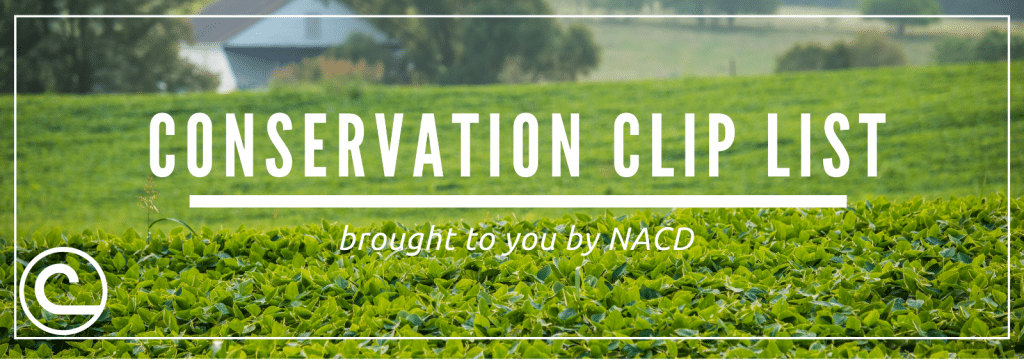
Conservation Clips is a weekly collection of articles distributed by NACD that provides our members and partners with the latest news in what’s driving conservation. These articles are not indicative of NACD policy and are the opinions of their authors, unless otherwise noted. If you have a relevant submission or need assistance accessing articles, please contact the NACD Communications Team.
NACD: NACD Comments on “Harm” in the Endangered Species Act
05/19/2025
The change in the definition of a ‘take’ via “harm” will require review of habitat restoration plans, listed species, resource management plans, and critical habitat designations. NACD encourages the USFWS to ensure timely, scientific review of endangered or threatened species listings, and critical habitat designation, and to provide that data publicly.
NACD Blog: Did You Know – NACD’s Committees and Subcommittees Work for our Members?
05/19/2025
Did you know that NACD’s Bylaws (available on our Member’s Only page) allow for three standing committees and several subcommittees, each of which work on behalf of our membership? At the start of their term, the NACD President finalizes NACD’s committee appointments, establishes any subcommittees, and generally charges these groups with supporting our members through advocacy, education, partnerships, and other important services.
NACD: NACD Announces $17.5 Million in Outreach and Technical Assistance Grants for 161 Conservation Districts
05/22/2025
NACD announced the award of $17.5 million in Outreach and Technical Assistance grants to 161 conservation districts in 45 states and territories to advance the adoption of conservation practices by increasing the capacity of conservation districts across the country to provide technical assistance to farmers, ranchers, and forest stewards.
The High Plains Journal: Soil health more important than ever
By David Murray
05/09/2025
Traditional ways of fostering soil health have never completely gone away and are on the upswing. According to recent United States Department of Agriculture data, about 37% of U.S. cropland is managed using no-till farming, while 35% is under reduced-till practices, meaning that about 72% of U.S. cropland utilizes some form of conservation tillage, varying by region and crop type. No-till is more common in soybeans and less prevalent in crops like wheat or corn.
National Parks Traveler: Sell The Trees Or Fix The Forests…Or Both?
By Rita Beamish and Kurt Repanshek
05/13/2025
Efforts to blunt the ferocity and destruction of wildfires are dividing conservation advocates over proposals that would sidetrack science and allow for less analysis under the country’s hallmark environmental law. Critics fear that approach could accelerate unnecessary logging in national forests.
Insurance Business Mag: Bipartisan bill seeks to increase subsidies for crop insurance premiums
By Josh Recamara
05/13/2025
A bipartisan group of lawmakers has reintroduced legislation aimed at increasing federal subsidies for crop insurance premiums, with the stated goal of improving access to higher levels of coverage for farmers, according to a report from AM Best.
Nebraska Public Media: Soil conservation in the US started with this agency 90 years ago. Now its future is uncertain
By Anna Pope
05/14/2025
At the height of the fierce dust storms in the mid-1930s, more than 1.2 billion tons of soil blew away. This spring marks the 90th anniversary of the federal agency that was born out of that ecological disaster, what’s now known as the Natural Resources Conservation Service. Yet after nine decades, the NRCS is facing an uncertain future. The agency has lost as much as 20% of its workforce, with estimated job losses reportedly surpassing 2,400 employees, since President Trump took office.
C3 News Mag: Conservation That Works for Producers and the Land
By Cecilia Greco
05/20/2025
One witness, Gary Blair of the National Association of Conservation Districts, emphasized that these programs support land resiliency and resource preservation and offer significant economic benefits to producers. He explained that soil health management systems, often funded through these programs, help reduce input costs and boost farm revenue by an average of $65 per acre.